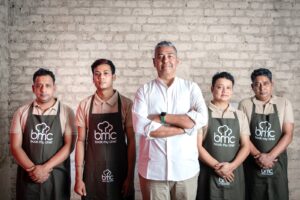Trevor Mundel is the president of Global Health at the Bill & Melinda Gates Foundation and leads the Foundation’s efforts to develop high-impact interventions against the leading causes of death and disability in low- and middle-income countries. He also manages cross-cutting product development programmes, including discovery & translational sciences, innovative technology solutions, and vaccine development in close collaboration with an international network of grantees, partners and governments.
In India to deliver a talk on Innovating for impact: How India can solve some of the world’s toughest health challenges at the All-India Institute of Medical Sciences on Monday, he speaks to Sanchita Sharma on India’s leadership in developing high quality, safe and effective vaccines and drugs and its potential to offer digital global health solutions.
What are two biggest high-impact global public-health interventions? What has been India’s role?
The most impactful intervention in public health has been GAVI, the Vaccine Alliance, which is an organisation that provides cost-effective vaccines to countries and populations. Over the years, I have been tremendously impressed by the pivotal role India has played and the quality of affordable vaccine industry that has evolved over here, uniquely actually. India is now the biggest volume supplier to the public market of vaccines.
Then there’s its contribution on the drugs front, of the quality generic drugs that come out of India. We want to replicate this and build for further progress on health in India with implications for global health community. This range of interventions can be made available globally given the bulk of scientific research and development and the regulatory environment that exists in India.
A couple of days ago, I got my typhoid injection that offers protection for two to three years. The Bharat Biotech’s new conjugate form of the typhoid vaccine lasts a decade, maybe a lifetime. It is not available in US and Europe, but it available in India and Bharat (Biotech) is providing it to GAVI for global use.
Can India’s success be replicated in other countries?
There is a proliferation of manufacturing, in China, Indonesia… but vaccines are very complex, multi-step products with lots of quality issues, with the end result that the vaccine may not be effective or may even be dangerous. India is not just making vaccines but making them within a quality system, has not been accomplished, broadly, and that is the unique aspect India has brought to the game.
Vaccine denial is increasing, in India and around the world. There have been measles outbreaks in United States. How can fake news about vaccines be stopped?
The people who understand the value of vaccine became somewhat complacent because of, in some ways, the success of vaccines. Take the measles vaccination, which eliminated measles in the US, and made people forgot the disabling consequences of measles. That allows the anti-vaccine movement to flourish. In eliminating the problem, the vaccine became the problem. We now know what happens when there is a relaxation (in vaccination coverage) and measles resurges – it is really deadly in children who have low resistance and are malnourished. So I think policymakers, governments and funders like ourselves cannot be complacent on the gains we have made on the vaccine front just because we got too successful.
India and the world have halved maternal and under-5 deaths. How can progress be accelerated to meet SDGs?
Sometimes, the last mile is the most difficult because now you’re left with more complicated circumstances, such as maternal issues that can’t easily be dealt with at a primary health clinic and need to be dealt in a district or secondary hospitals.
Most of the changes have to be on the systems side. I know that there’s been a tremendous amount of thought and interventions around wellness clinics, auxiliary nurse midwife (ANM) and Asha (community health worker), and the system can be enhanced in terms of workflows with new options within the digital framework. Much like they have been rolled out in financial services for the entire population, in the health area we are now seeing the opportunity for the digital services to provide an upgrade, I wouldn’t say for free, but with the same people who are in the system. It provides a real upgrade so the people can be more effective. And that will make the last mile more achievable.
How will machine learning and artificial intelligence (AI) improve delivery?
On this trip, I’m visiting some people who are working in the AI space, like the Wadhwani AI group in Mumbai that is developing pioneering mobile phone-based tools to diagnose the 1 million tuberculosis cases that go unidentified in India each year.
There are two stages of this evolution. The first is the actual digital implementation of tools that were implemented by hand. ICMR (Indian Council of Medical Research) has this wonderful integration of care pathways that have been distilled on one page.



